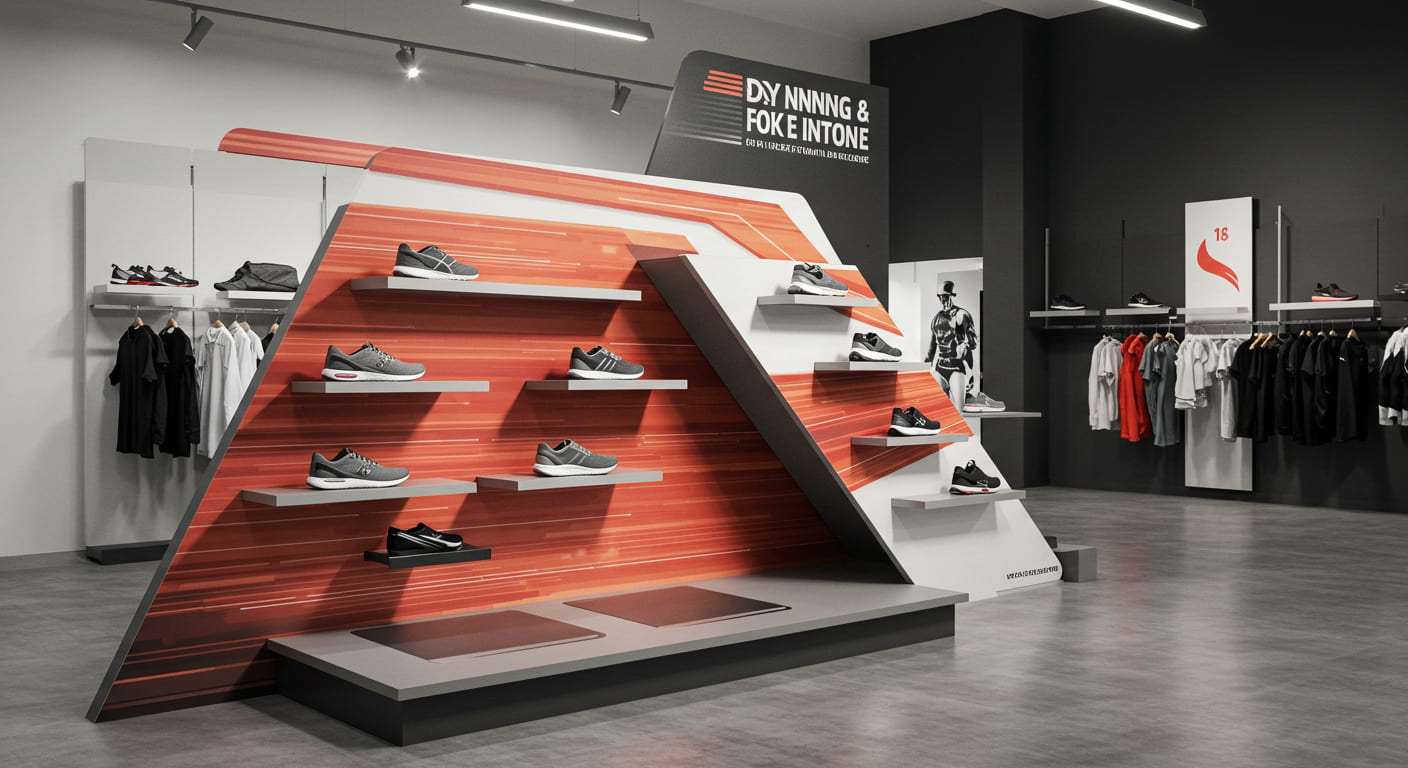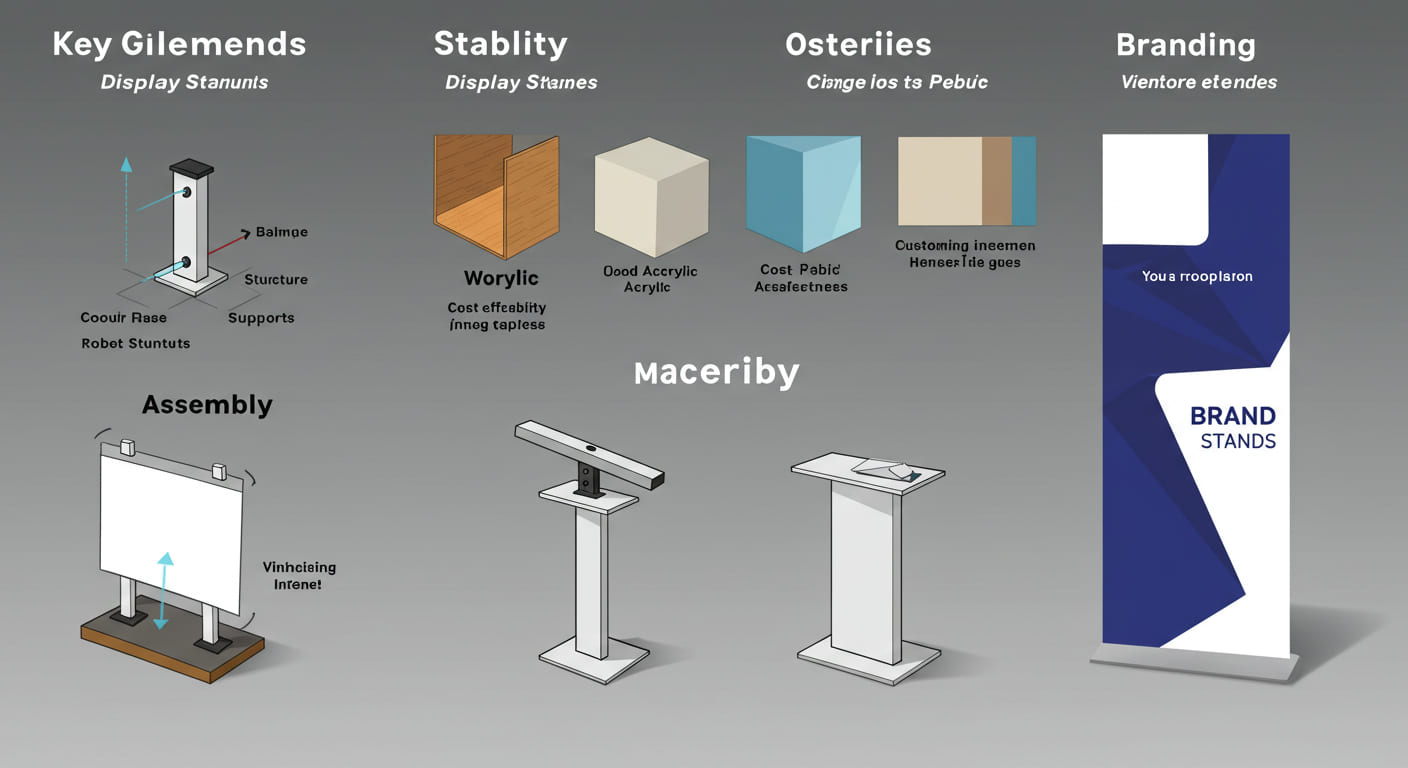
What Makes Good Display Stands?
Does your beautiful stand design turn into a real-world disaster? You approve a concept, but the final product is wobbly, way over budget, or simply fails to sell anything.
A good display stand1 is one that is stable2, cost-effective, and strategically designed to actively sell products. It is the result of a smart collaboration between a designer’s vision and a manufacturer’s practical expertise.

In my factory, we don’t just get drawings and hit "print." A display stand is a project that needs to be engineered. I see designs every day from talented people like Mark, but a drawing on a screen is not a physical object. The journey from that beautiful image to a successful stand on the retail floor is where my team and I add the most value. It’s what separates a simple piece of furniture from a true sales machine.
How Do You Go Beyond Just Holding Products with Your Display?
Is your display stand successfully holding your inventory, but doing nothing more? It just blends into the background, failing to capture attention or tell customers why your product is special.
To go beyond just holding products, your display must become an active storyteller. It must use its design, materials, and graphics to communicate a key message or create an emotional connection with the shopper.

Dive Deeper
The art of a display is in what it communicates. I remember a client who came to us with a design for a simple shelf to hold their new energy drink. It was functional, but it was boring. I asked them, "What are you selling? Are you selling a can of liquid, or are you selling energy?" That changed everything. My engineers worked with the designer to create a stand from bent steel tubing that looked like it was full of motion. We used vibrant digital printing on the back panel to show athletes in action. Suddenly, the stand wasn’t just holding the product; it was a physical representation of the brand’s promise. This is where manufacturing becomes an art form. My team in China has access to every process imaginable—from complex metal bending to high-resolution printing. We can take a designer’s core idea and find the right physical process to turn that idea into a powerful, three-dimensional story that actually sells.
What Are the Key Elements of a High-Impact Display Stand?
Do you find that your approved designs look totally different in real life? The prototype arrives and it’s unstable, the materials feel cheap, or it takes an hour to assemble.
The key elements of a high-impact stand are structural integrity1, smart material selection, ease of assembly2, and clear branding. These practical elements are just as important as the stand’s visual design.

Dive Deeper
A display stand has to survive in the real world. A designer creates the vision, and my job as the manufacturer is to make sure that vision can be built effectively. This partnership is crucial. When we receive a design, my engineers immediately analyze it for these key elements. Is the structure stable enough to not fall over if a customer bumps it? Can we use a more cost-effective material without losing quality? For example, a designer might specify solid wood, but we might suggest a durable MDF with a photorealistic wood veneer to save them 40% on cost. Most importantly, we think about assembly. We often redesign stands to be "knock-down" (flat-packed) to save thousands on shipping and make it easy for store staff to put together with simple tools. This collaboration is constant. Because my team is so accessible, a designer in the US can send a file in the evening, and wake up to find feedback and solutions from my engineers. That’s the benefit of a hardworking, communicative partner.
| Key Element | Why It Matters | How We Achieve It |
|---|---|---|
| Structural Integrity | Prevents wobbling, ensures safety and durability. | Engineering review, stress testing, proper material gauge. |
| Smart Materials | Balances cost, appearance, and durability. | Sourcing the right materials, suggesting cost-effective alternatives. |
| Easy Assembly | Saves on shipping costs and setup time in the store. | Designing knock-down structures, creating clear instructions. |
| Clear Branding | Ensures the stand works to build brand identity. | High-quality printing, precise color matching, integrated signage. |
How Can You Drive Sales Through Strategic Display Design?
Is your stand perfectly built and good-looking, but your products still aren’t moving? This means it’s functioning as pretty furniture, not as a strategic tool designed to close a sale.
You drive sales by designing a display that guides the customer’s actions. It strategically places products, uses messaging to answer questions, and incorporates features that encourage shoppers to touch and interact with the merchandise.

Dive Deeper
A strategic display thinks like a salesperson. Its goal is to make the decision to buy as easy as possible. This goes far beyond just looks. It involves understanding shopper psychology. For example, placing the star product directly at eye level (about 4-5 feet high) is a basic rule. We also design displays with a clear visual path. Graphics might point toward a "best value" package, or lighting might highlight a specific feature. Interactive elements are incredibly powerful. For a stand selling headphones, we built in multiple "Try Me" stations with active audio. For a makeup display, integrating a mirror is a non-negotiable. This is where I find that visiting our facilities in China can be a game-changer for designers. A designer from Europe visited us recently and saw a new type of flexible LED screen we were experimenting with. It sparked an idea. We ended up working together to create a stand for a new sneaker with a curved, animated light background that made the shoe look like it was flying. That interactive feature led to a 30% increase in sales for their client. That’s strategy in action.
Conclusion
A good display stand is where great design meets intelligent manufacturing. It is a stable, affordable, and powerful sales tool born from a close partnership focused on turning a vision into a commercial success.